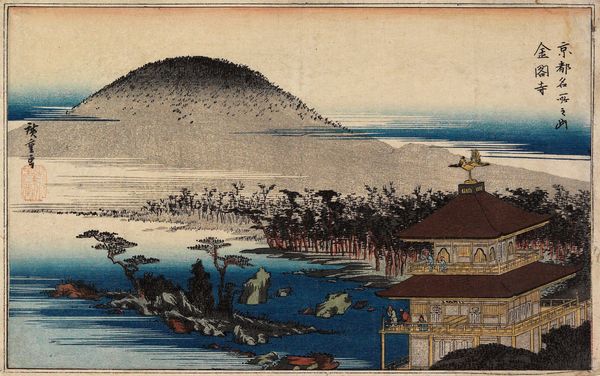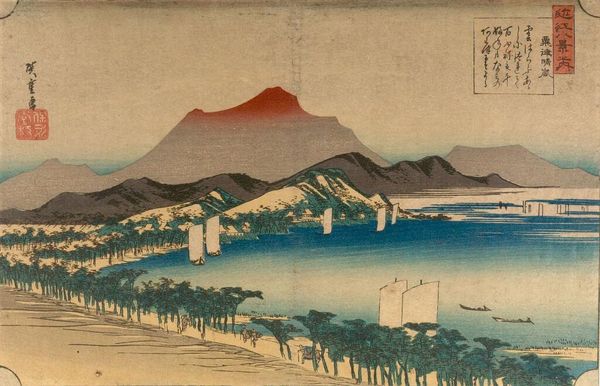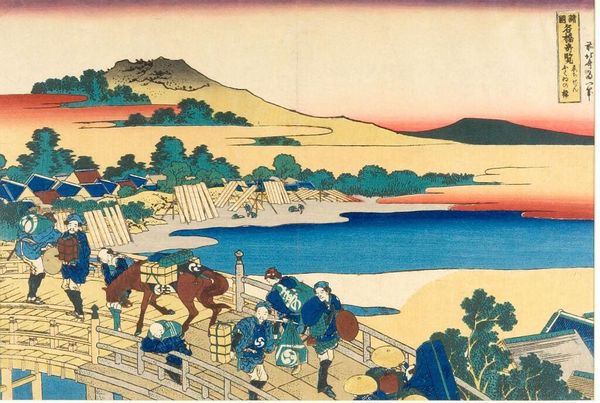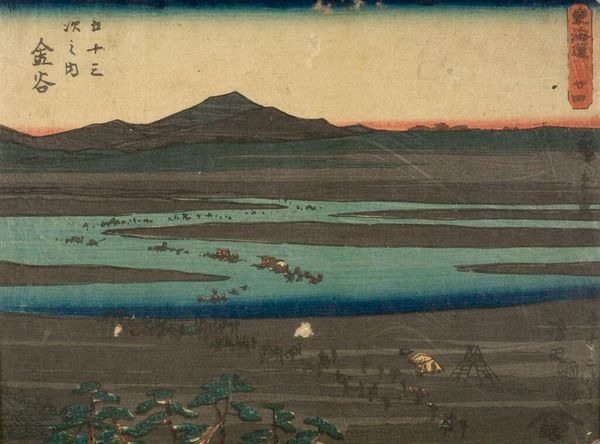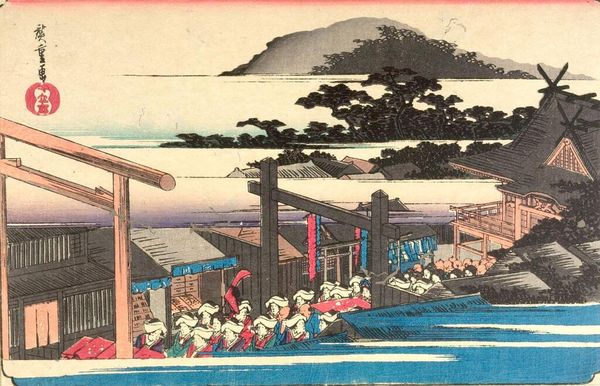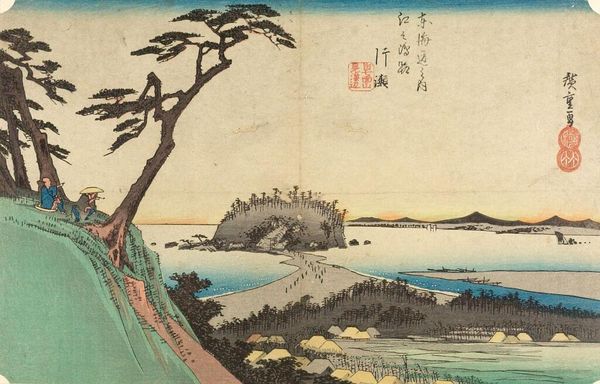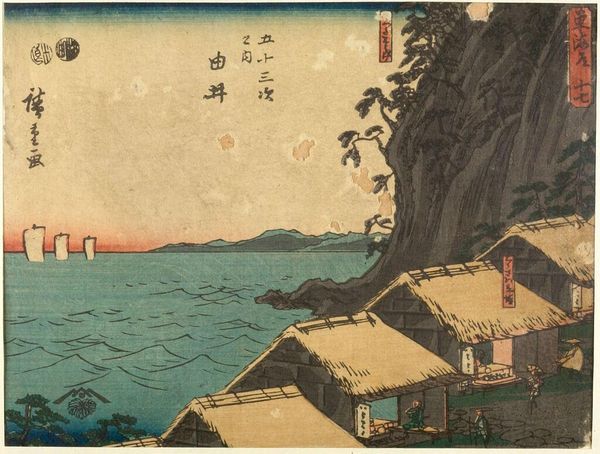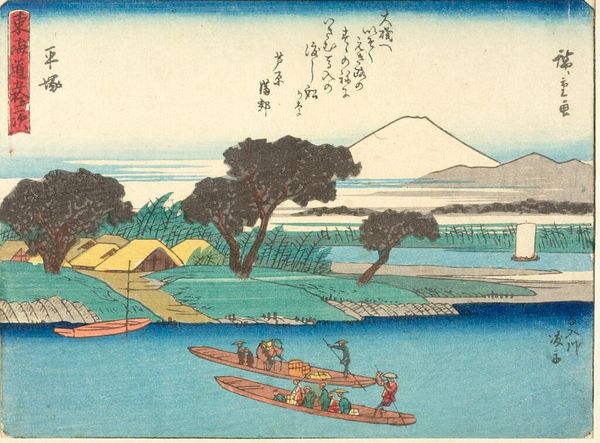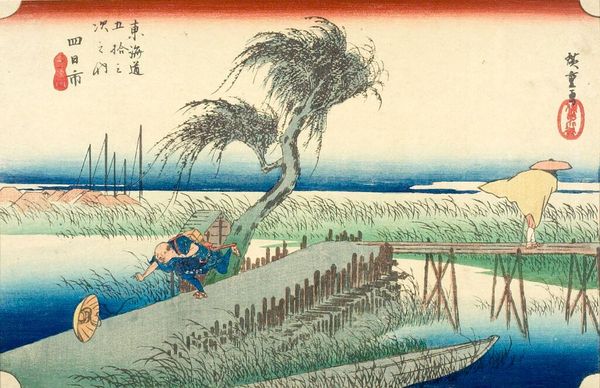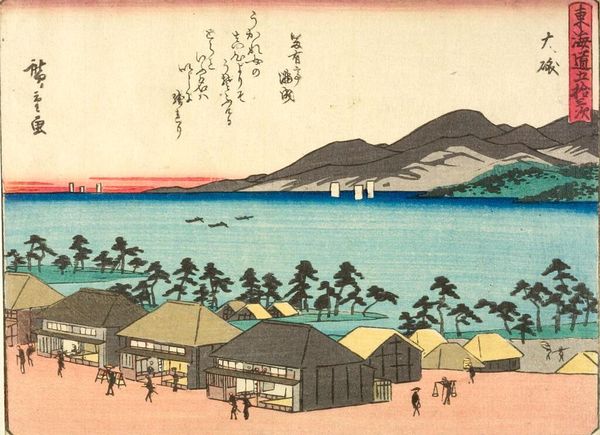
The Temple of the Golden Pavilion (Kinkaku-ji), from the series Famous Views of Kyoto (KyÅto meisho no uchi) c. 1834
0:00
0:00
Dimensions: Horizontal Åban
Copyright: CC0 1.0
Curator: Utagawa Hiroshige's woodblock print, "The Temple of the Golden Pavilion," part of his "Famous Views of Kyoto" series, captures a moment in time, a specific relationship between power, nature, and spirituality. Editor: Immediately, I'm struck by the contrast—the geometric precision of the pavilion against the organic, almost chaotic rendering of the landscape. Curator: The pavilion, Kinkaku-ji, has a complex history—initially a retirement villa for a shogun, later transformed into a Zen Buddhist temple. Hiroshige's print doesn't just show us a pretty building; it speaks to cycles of power and belief. Editor: The color palette itself is a deliberate choice—the vivid blues of the water juxtaposed with the muted browns and oranges of the mountain and sky. There's a clear understanding of how colors interact to guide the viewer's eye. Curator: Indeed, and understanding the social context of woodblock prints during the Edo period reveals how this image catered to a growing merchant class eager for representations of idealized landscapes and cultural landmarks. Editor: Seeing how Hiroshige manipulated line and form gives us so much to consider about his masterful understanding of composition. Curator: Absolutely. It’s also a powerful reminder of the temple’s symbolic weight, both historically and in contemporary cultural discourse.
Comments
No comments
Be the first to comment and join the conversation on the ultimate creative platform.
